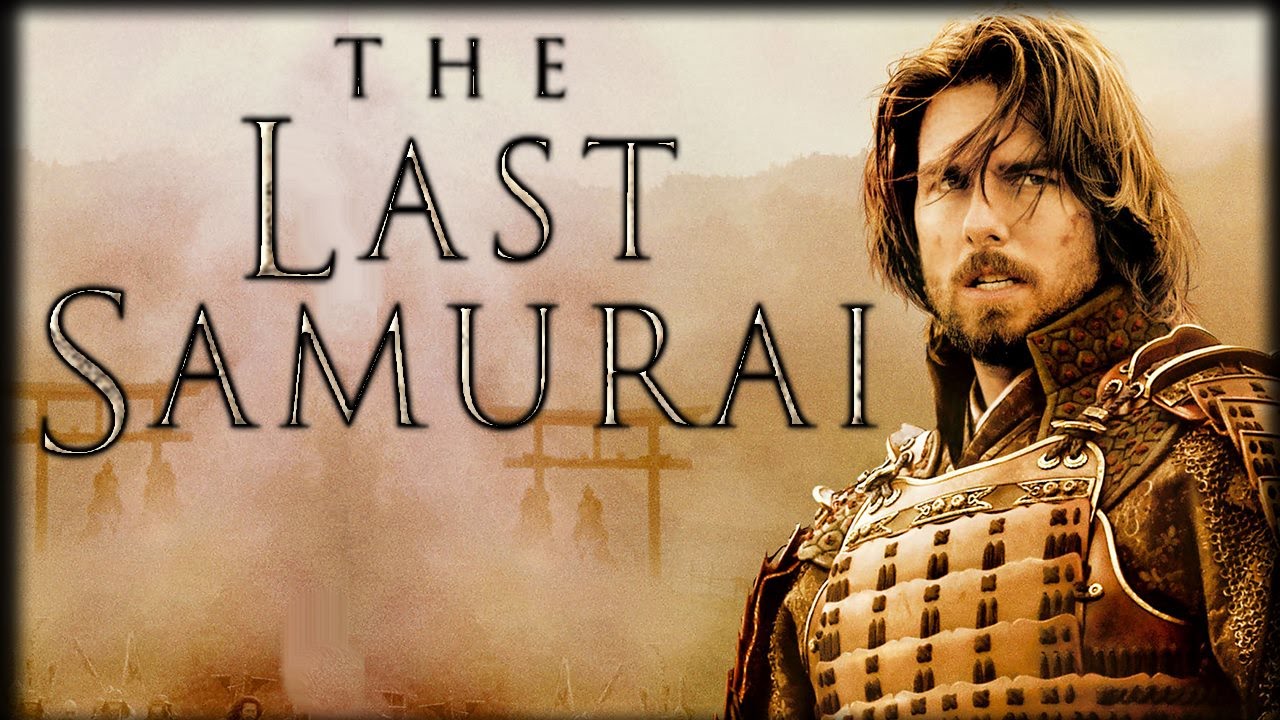
The Last Samurai is a captivating and epic movie that tells the story of an American military officer, Captain Nathan Algren, who finds himself drawn into the conflict between tradition and modernity in 19th century Japan. Directed by Edward Zwick and starring Tom Cruise, this film takes viewers on a journey of honor, bravery, and cultural clashes.
Set against the backdrop of Japan’s Meiji Restoration, The Last Samurai combines historical events with fictional storytelling to create a compelling narrative. The movie explores themes of identity, loyalty, and the clash between traditional samurai values and the encroaching Western influence.
In this article, we will delve into 38 fascinating facts about The Last Samurai that will give you a deeper appreciation for the film’s production, historical accuracy, and the remarkable performances of its cast. So grab your popcorn, sit back, and get ready to dive into the world of The Last Samurai!
Key Takeaways:
- The Last Samurai is a captivating historical film that explores the clash between tradition and modernization, showcasing stunning battle scenes and the beauty of Japanese culture.
- Through its powerful storytelling and performances, The Last Samurai delves into themes of honor, resilience, and cultural exchange, leaving a lasting impact on audiences.
The Last Samurai was released in 2003.
The Last Samurai is an epic historical drama film that was released in the year It was directed by Edward Zwick and produced by Marshall Herskovitz, Tom Cruise, and Paula Wagner.
Tom Cruise stars as the lead character, Captain Nathan Algren.
In The Last Samurai, Tom Cruise plays the role of Captain Nathan Algren, a disillusioned American military officer who finds himself captivated by the samurai culture during the Meiji Restoration in Japan.
The film is set in the late 19th century.
The Last Samurai takes place during the late 19th century, a time of significant change in Japan as the country opens its doors to Western influence.
Ken Watanabe plays the role of Katsumoto, the leader of the Samurai rebellion.
Ken Watanabe delivers a powerful performance as Katsumoto, the leader of the samurai rebellion against the modernization of Japan. His portrayal earned him an Academy Award nomination for Best Supporting Actor.
The Last Samurai blends historical events with fictional characters.
While the film incorporates real historical events such as the Satsuma Rebellion and the Battle of Shiroyama, the characters themselves are fictional creations.
Hans Zimmer composed the film’s score.
The musical score of The Last Samurai was composed by the renowned Hans Zimmer. The soundtrack received critical acclaim and was nominated for several awards.
The Last Samurai was shot on location in Japan and New Zealand.
The filmmakers took great care to create an authentic setting for the movie, shooting on location in Japan as well as in New Zealand, which doubled as Japan for certain scenes.
The movie highlights the clash between traditional samurai values and modernization.
One of the central themes explored in The Last Samurai is the clash between traditional samurai values, such as loyalty, honor, and discipline, and the pressures of modernization.
The battle scenes in the film are visually stunning.
The Last Samurai features breathtaking battle scenes that are meticulously choreographed and visually stunning. The action sequences are a testament to the skill and dedication of the filmmakers.
The Last Samurai received four Academy Award nominations.
The film was nominated for Best Art Direction, Best Costume Design, Best Sound Mixing, and Best Supporting Actor for Ken Watanabe’s performance.
The Last Samurai explores the concept of cultural assimilation.
Through the character of Captain Algren, the film delves into the idea of cultural assimilation and the challenges faced by individuals caught between two worlds.
The Last Samurai showcases the beauty of Japanese landscapes.
The movie takes full advantage of the stunning Japanese landscapes, showcasing the beauty of cherry blossoms, traditional gardens, and picturesque mountains.
The Last Samurai addresses themes of redemption and personal growth.
Throughout the film, Captain Algren undergoes a journey of redemption and personal growth as he begins to understand and appreciate the values of the samurai.
The Last Samurai won the Academy Award for Best Sound Editing.
The film was awarded the Oscar for Best Sound Editing, recognizing the meticulous sound design and mixing that contributed to the immersive experience of the movie.
The Last Samurai has a runtime of 154 minutes.
The film has a runtime of approximately 154 minutes, allowing for a comprehensive exploration of the story and characters.
The Last Samurai was well-received by critics.
The film garnered positive reviews from critics, who praised the performances, cinematography, and thematic depth of the story.
The Last Samurai explores the clash of cultures.
Throughout the movie, viewers witness the clash of cultures between the traditional Japanese samurai and the Western influences brought about by the Meiji Restoration.
The costumes in the film were designed by Ngila Dickson.
The intricate costumes in The Last Samurai were designed by Ngila Dickson, who meticulously captured the essence of Japanese fashion during the late 19th century.
The Last Samurai grossed over $456 million worldwide.
The movie was a box office success, grossing over $456 million worldwide, making it one of the highest-grossing films of 2003.
The Last Samurai features stunning cinematography.
The film showcases breathtaking cinematography, capturing the grandeur of the Japanese landscapes and the intensity of the battle scenes.
The Last Samurai is inspired by actual historical figures.
While the characters in the film are fictional, they draw inspiration from real historical figures, such as Saig? Takamori and Emperor Meiji.
The Last Samurai raises questions about cultural imperialism.
The movie prompts viewers to contemplate the implications of cultural imperialism and the impact it has on indigenous cultures.
The Last Samurai was nominated for Best Original Score at the Academy Awards.
Hans Zimmer’s evocative musical score for The Last Samurai earned him a nomination for Best Original Score at the Academy Awards.
The Last Samurai highlights the beauty of traditional Japanese art forms.
Throughout the movie, traditional Japanese art forms such as calligraphy, tea ceremonies, and sword fighting are prominently featured, showcasing their elegance and significance in samurai culture.
The Last Samurai explores the concept of honor.
Honor is a central theme in the movie, as it delves into the sacrifices made by the samurai in order to uphold their code of honor.
The Last Samurai delves into the complexities of loyalty.
The film examines the concept of loyalty and the challenges faced by characters torn between duty and personal convictions.
The Last Samurai pays homage to Japanese history and culture.
The filmmakers paid great attention to detail in order to accurately depict Japanese history and culture, showcasing their reverence for the subject matter.
The Last Samurai features intense and emotional performances.
The performances in the film, particularly by Tom Cruise and Ken Watanabe, are praised for their emotional depth and authenticity.
The Last Samurai includes Japanese dialogue.
As a testament to its commitment to authenticity, the film includes moments of dialogue in Japanese, adding an extra layer of realism to the storytelling.
The Last Samurai explores the concept of resilience.
The movie showcases the resilience of both the samurai and Captain Algren as they face adversity and strive to preserve their values.
The Last Samurai was nominated for a Golden Globe Award for Best Motion Picture – Drama.
The film received critical acclaim and was recognized with a nomination for Best Motion Picture – Drama at the Golden Globe Awards.
The Last Samurai features a compelling story of self-discovery.
The film takes viewers on a journey of self-discovery as the characters question their beliefs and find their true purpose.
The Last Samurai incorporates elements of bushido, the samurai code of honor.
The bushido code, which emphasizes virtues such as bravery, respect, and self-discipline, is explored throughout the movie as a guiding principle for the samurai.
The Last Samurai highlights the power of cultural exchange.
The movie showcases how the exchange of ideas and cultures can lead to personal growth and a deeper understanding of one’s own identity.
The Last Samurai contains visually striking battle sequences.
The battle sequences in the film are not only visually impressive but also serve as a powerful metaphor for the clash between tradition and modernity.
The Last Samurai is known for its attention to historical accuracy.
The filmmakers strived to accurately portray the historical events and cultural nuances of the time period, earning praise for their attention to detail.
The Last Samurai explores the complexities of war.
The movie delves into the moral complexities of war, questioning the justifications behind conflict and the impact it has on individuals and societies.
The Last Samurai is a thought-provoking film that leaves a lasting impact.
Through its captivating storytelling and powerful performances, The Last Samurai resonates with audiences, leaving them with a profound appreciation for the values of honor, loyalty, and self-discovery.
Overall, The Last Samurai is a captivating and visually stunning film that expertly blends historical events with fictional characters. With its exploration of themes such as cultural assimilation, the clash between tradition and modernization, and the power of resilience, this movie presents a thought-provoking narrative that continues to captivate audiences today. If you’re a fan of epic historical dramas and breathtaking cinematography, The Last Samurai is definitely worth a watch.
Conclusion
The Last Samurai is a captivating and visually stunning film that provides a unique and thought-provoking look into Japanese history and culture. With its epic battle scenes, compelling characters, and powerful storytelling, this movie has become a favorite among film enthusiasts. The performances by Tom Cruise, Ken Watanabe, and the rest of the cast are outstanding, bringing depth and authenticity to their roles. The Last Samurai is not just a tale of war and honor, but also a story of personal growth and self-discovery. Its themes of cultural understanding and the pursuit of one’s own identity resonate with audiences of all backgrounds. Whether you’re a fan of historical dramas, action films, or simply appreciate a well-crafted story, The Last Samurai is definitely a movie worth watching.
FAQs
1. Is The Last Samurai based on a true story?
Yes, The Last Samurai is loosely based on the events of the Satsuma Rebellion in Japan during the late 19th century. However, the characters and specific plot details are fictionalized.
2. Who directed The Last Samurai?
The Last Samurai was directed by Edward Zwick, known for his work on films such as Glory and Blood Diamond.
3. Did Tom Cruise do his own stunts in The Last Samurai?
Yes, Tom Cruise performed many of his own stunts in the movie, including horse riding and sword fighting, after undergoing extensive training.
4. What is the significance of the title, The Last Samurai?
The title refers to the character of Katsumoto, who is portrayed as the last remaining samurai fighting against the modernization of Japan during the Meiji Restoration.
5. What awards did The Last Samurai receive?
The Last Samurai received several nominations and won awards for its cinematography, sound design, and musical score, including an Academy Award for Best Sound Editing.
6. Where was The Last Samurai filmed?
The movie was primarily filmed on location in New Zealand and Japan, with breathtaking landscapes and authentic settings that bring the story to life.
If you're captivated by the epic storytelling in The Last Samurai, why not explore more fascinating facts about the film's director, Edward Zwick? Gain insights into the bushido code that shaped the samurai's way of life. For another gripping historical drama, discover the cinematic masterpiece The Passion of Joan of Arc.
Was this page helpful?
Our commitment to delivering trustworthy and engaging content is at the heart of what we do. Each fact on our site is contributed by real users like you, bringing a wealth of diverse insights and information. To ensure the highest standards of accuracy and reliability, our dedicated editors meticulously review each submission. This process guarantees that the facts we share are not only fascinating but also credible. Trust in our commitment to quality and authenticity as you explore and learn with us.


